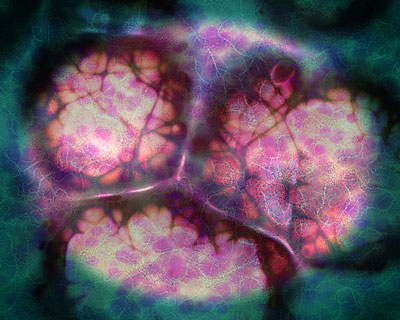Basis for new treatment options for a fatal leukaemia revealed
Posted: 29 July 2015 | Victoria White
An international team of scientists have succeeded in decoding the molecular characteristics of an as yet incurable subtype of leukaemia…

Acute lymphoblastic leukaemia (ALL) is the most common type of cancer in children.
It can occur in various forms, differing not only by specific changes in the genetic material of the leukaemia cells but also by their response to therapies. Now, an international team of scientists have succeeded in decoding the molecular characteristics of an as yet incurable subtype of leukaemia, paving the way for new therapeutic approaches.
Although intensive research over the last decade has significantly improved the survival rates of children suffering from ALL, a subset of patients remains resistant to treatment. One example is the very aggressive and incurable subtype associated with a t(17;19) chromosomal translocation, which occurs due to breakage and aberrant fusion of genetic material in the tumour cells, resulting in the formation of a new oncogenic protein encoded by the genes TCF3 and HLF (TCF3-HLF-positive leukaemia cells). Until now, the molecular basis of this phenotype has remained elusive. An international group of clinicians and scientists, with contributions from Alacris Theranostics, has conducted an in-depth analysis of the molecular features of the t(17; 19) ALL subtype.
The consortium team decoded the genome of the leukaemic cells using sophisticated bioinformatics methods. The team found genetic aberrations in addition to the known translocation.
With the aim of identifying therapeutic entry points for this incurable form of ALL, the transcriptome of the cancer cells was also analysed in great detail, enabling identification of the genes active within the leukaemic cell. The so-called expression profile of the cancer cells was deciphered by means of RNAseq, a focus of research in Marie-Laure Yaspo’s group at the Max Planck Institute for Molecular Genetics in Berlin. The interplay between the fused TCF3-HLF oncogenic protein, additional DNA changes and altered gene expression program leads to a re-programming of leukaemic cells to an early, stem-cell like developmental stage, although the phenotypic appearance of the cells remains similar.
Research could lead to new therapeutic options for TCF3-HLF-positive ALL
“This technique provides a quantitative read out of the actual genetic program occurring in the cancer cells, which allowed us to uncover relevant molecular mechanisms cooperating to promote tumorigenesis, and to identify possible druggable targets. These findings could only be achieved through analysis of the messenger RNAs”, says Marie-Laure Yaspo.
In tandem, researchers from the team of Jean-Pierre Bourquin (University Children’s Hospital, Zürich) transplanted the leukaemic cells in mice and established a “humanised mouse model”, an invaluable tool for testing therapeutic response. The consortium team demonstrated that the mouse engrafted and expanded cells retained most of the genetic features and expression profiles of the original leukaemic cells. The cells thus behaved in a similar manner than in the patient, offering an attractive possibility for translational medicine. The Zurich Group tested close to hundred drugs, and demonstrated a very positive response of the mouse model TCF3-HLF-positive cells to Venetoclax, a drug targeting the protein BCL2, and which has already showed efficiency in other type of cancers.
The research findings are published in Nature Genetics.



